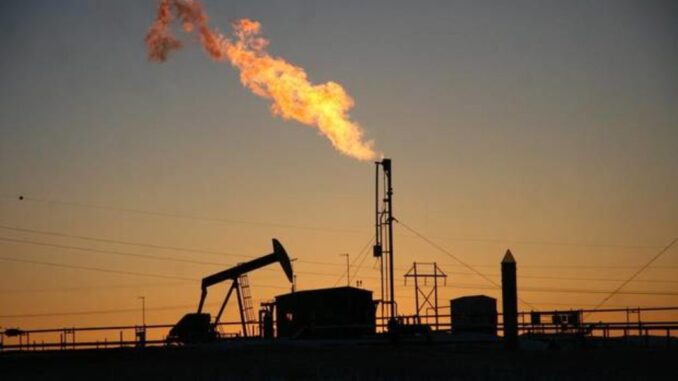
It is indeed inscrutable that government’s projection to end gas flaring over the years has failed due to several factors. But huge revenue expected from penalty payments by the oil and gas companies appears to be the focal point now to the detriment of the environment, which should be the main concern of all stakeholders.
That would be unfortunate if non-compliance with approved standard procedures of oil exploitation becomes a major revenue source.
The foregoing is against the backdrop of the recent declaration that gas flare penalty payments by oil and gas companies will increase to N103.51 billion this year, meaning that government has been receiving revenue from this source when it was thought that all energy was geared towards ending the menace that pollutes the environment.
The Director-General, Budget Office of the Federation, Ben Akabueze, disclosed this in a presentation in which he highlighted the revenue measures taken by the government to manage the resultant budgetary pressure from the Coronavirus crisis and the oil price slump.
Akabueze said the government would “tighten implementation of the 2018 revised gas flare penalty payment regime (resulting in upward revision of gas flare penalty for 2020 from N44.7bn to N103.51bn).” On this ground, does government really want gas flaring to end?
According to the revised payment regime for gas flaring, oil firms producing 10,000 barrels of oil or more per day will pay $2 per 1,000 standard cubic feet of gas, compared to N10 per 1,000 scf in the past. Firms producing less than 10,000 barrels of oil per day will pay a gas flare penalty of $0.5 per 1,000 scf.
Data from the Nigerian National Petroleum Corporation (NNPC) in February indicate that oil and gas firms operating in the country flared a total of 225.81 billion scf of gas from January to November 2019. The NNPC, in its latest monthly report, said a total of 253.09 billion scf of natural gas was produced in January, while 7.9 per cent or 643.59 million scf per day was flared. It said a total of 3,128.57 billion scf of gas was produced from January 2019 to January 2020, with an average gas flare rate of 8.46 per cent i.e. 671.40 million scf per day.
According to the report, production from joint ventures, production sharing contracts and the Nigerian Petroleum Development Company (an NNPC subsidiary) contributed about 69.17 per cent, 21.59 per cent and 9.24 per cent respectively to the total national gas production.
The Department of Petroleum Resources (DPR) said in February that it had shortlisted 200 investors to bid for gas flare sites after the evaluation of statements of qualification submitted by interested companies.
The DPR said 45 gas flare sites would be put up for auction in the first phase of the Nigerian Gas Flare Commercialisation Programme. To what extent has this action been implemented? There is need to adopt strategies that would help curb gas flaring as most developed country oil-producers have done.
Unfortunately, Nigeria is still far from the mark. Gas flaring in the country’s Niger Delta is a major problem. Decades of environmental pollution have wreaked havoc in the region. The physical environment is degraded, with the vegetal cover virtually lost.
Not long ago, it was reported that the NNPC is targeting a three-point strategy to end gas flaring in two years. Though, ambitious, it was not known how the politics and shenanigans of the oil industry would allow the effort to materialise.
The former Group Managing Director of NNPC, Maikanti Baru, who disclosed the new plan while delivering a paper at the recent 50th Offshore Technology Conference (OTC), in Houston, Texas, said the multi-pronged approach being undertaken by the Corporation would ensure a sustainable solution to the historical problem of gas flaring.
According to him, in the strategy, NNPC would ensure non-submission of Field Development Plans (FDPs) to the industry regulator, the Department of Petroleum Resources (DPR), without a viable and executable gas utilisation plan, which is aimed at ensuring no new gas flare in current and future projects. The other two strategies are a steady reduction of existing flares through a combination of targeted policy interventions in the Gas master-plan as well as the reinvigoration of the flare penalty through the Nigeria Gas Flare Commercialisation Programme (NGFCP) and through legislation that would put a ban on gas flaring via the recent Flare Gas (Prevention of Waste and Pollution) regulations 2018. We encourage the NNPC to be focused and not let distractions derail its plan.
It is regrettable that after more than five decades of oil exploitation, Nigeria has failed to follow international best practices associated with oil and gas resource exploitation. Rather than utilise it for economic benefit, the gas is allowed to burn out while the offenders are now made to pay penalty. What a curious source of revenue? It is indeed curious and in fact unfortunate that the country’s lawmakers are still not interested in a weightier matter of the law – the Petroleum Industry Bill (PIB), the oldest bill in the federal legislation that would have ended this conundrum.
END

Be the first to comment